These easy KitchenAid mashed potatoes are rich, creamy, and unbelievably simple to make. Your stand mixer does all the hard work, creating a perfectly smooth, lump-free texture without overmixing. They're the perfect side dish for the holidays or any cozy family meal. Once you try them, you'll never want to mash by hand again!
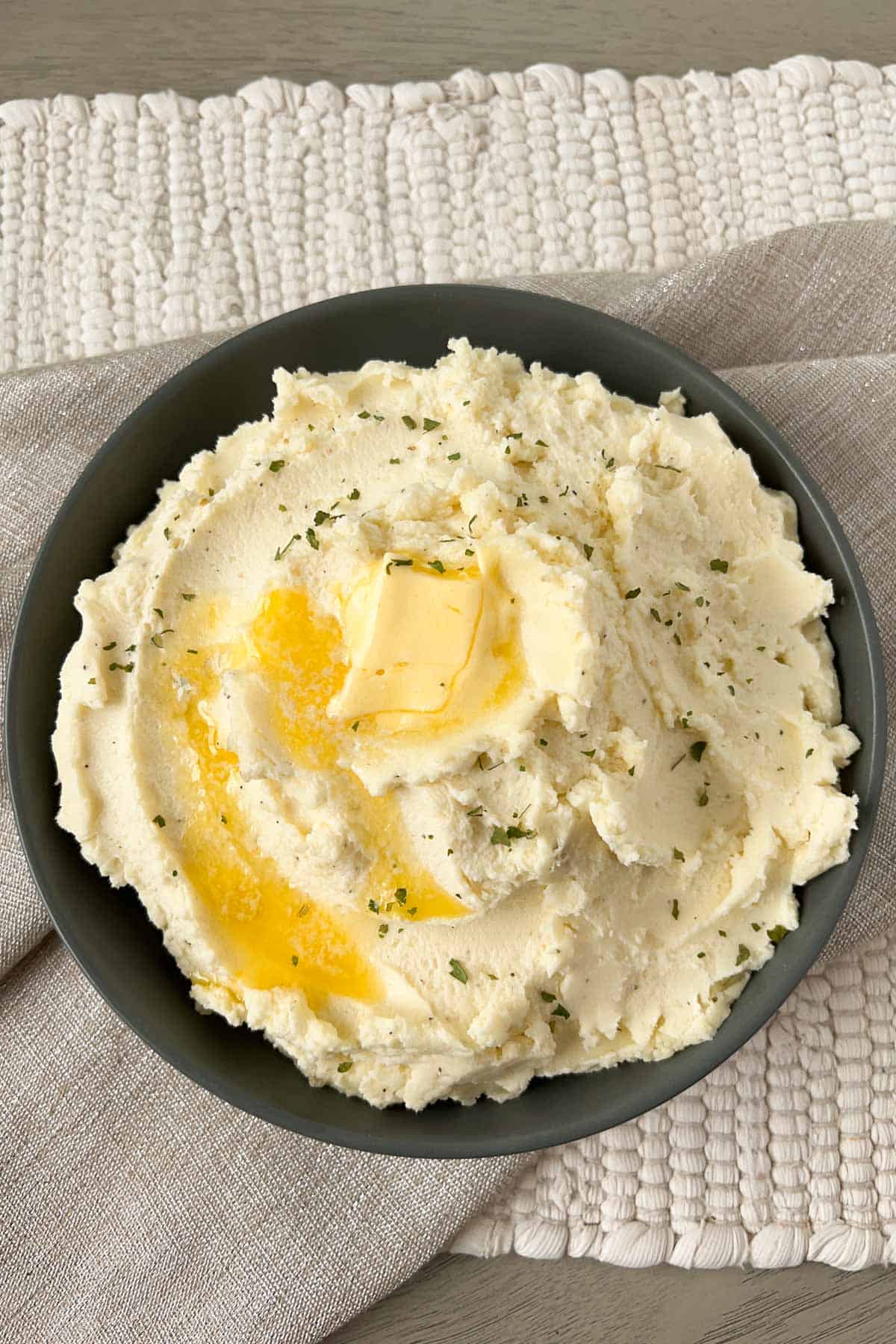
Save This Recipe! 💌
If you love creamy, buttery mashed potatoes, this recipe is for you! I've made mashed potatoes every way you can imagine, and using the KitchenAid mixer is hands-down the easiest and most reliable method. It consistently creates a smooth, fluffy texture without the risk of overmixing or gluey potatoes.
If you don't have a KitchenAid don't worry - any stand mixer will do. The secret is using the right attachments and mixing speeds at the right time, and my recipe will guide you through every step. Whether you're hosting a holiday dinner or making a weeknight meal, you can count on these mashed potatoes to turn out smooth, fluffy and delicious. They can even be made ahead for stress-free hosting.
If you're looking for more potato recipes, you'll love these air fryer diced potatoes that are super quick and easy. You'll also enjoy this pesto pasta, made Genovese-style with tender potatoes for a unique Northern Italian meal.
If you're here to plan your holiday meal in one place, I've got you covered. These stand mixer mashed potatoes pair perfectly with my old fashioned Thanksgiving dressing, cranberry sauce from dried cranberries, and Italian mac and cheese. For dessert, you'll love this pumpkin custard pie, pumpkin panna cotta, and pumpkin tiramisu! Each recipe has been tested and perfected for stress-free holiday cooking.
Jump to:
Ingredients
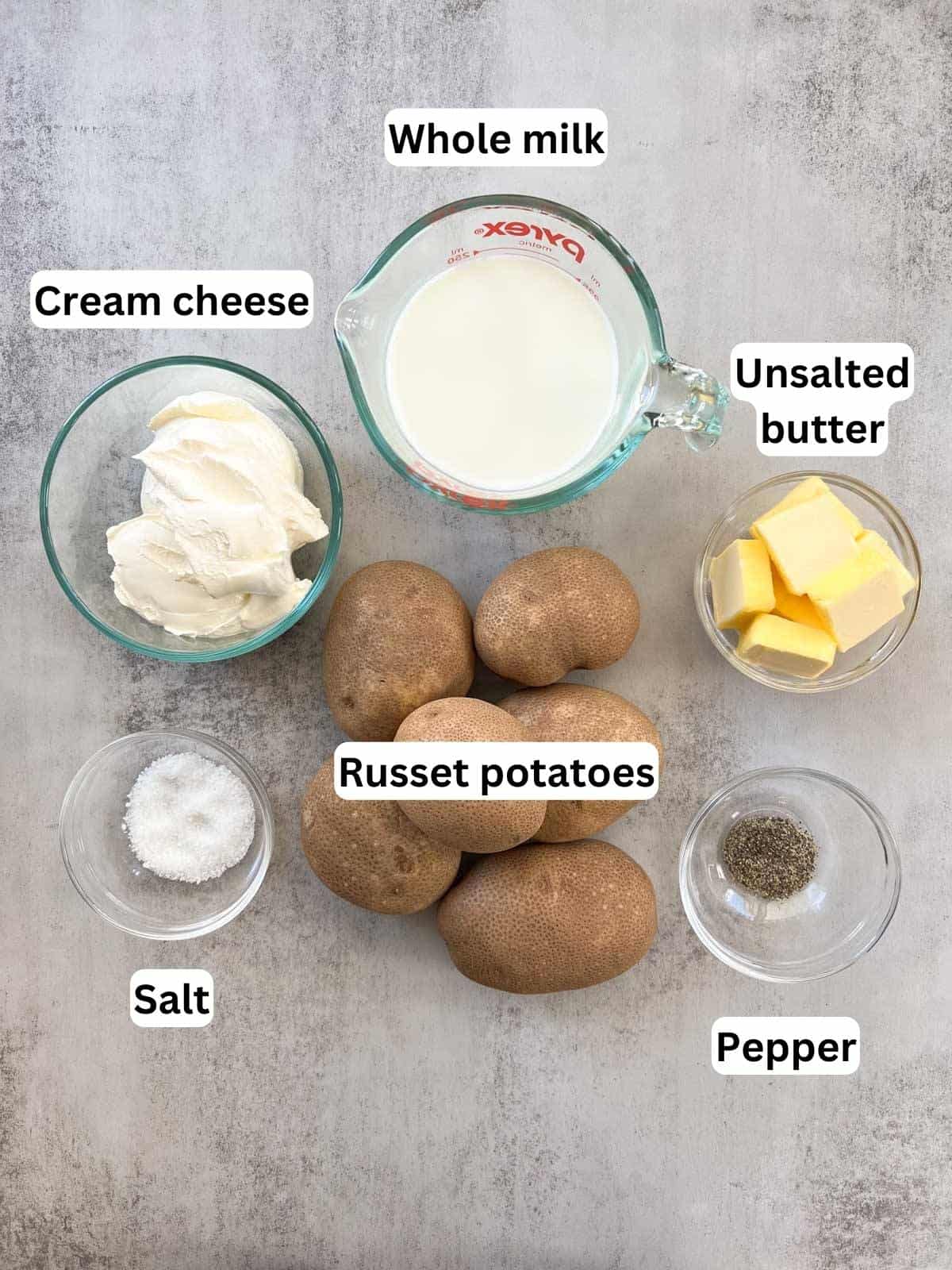
Ingredient Notes
- Russet potatoes: high in starch and low in moisture, they absorb butter and milk beautifully for a light, fluffy texture that's never gummy.
- Whole milk the higher fat content gives these mashed potatoes a rich, creamy consistency. I prefer grass-fed dairy for its fuller flavor. The milk should be room temperature so it blends smoothly into the potatoes. Cold milk can cause the butter to seize and make the texture heavy instead of creamy.
- Unsalted butter: use softened, room temperature butter for the best texture. Unsalted butter allows you to control the seasoning precisely. I love using grass-fed butter for its rich, slightly nutty flavor.
- Cream cheese: I use a tub-style cream cheese for a lighter, smoother consistency. I often use Nancy's probiotic cream cheese because the tanginess enhances the potatoes. If using the block kind, add a little extra milk to keep the texture light and creamy.
- Salt: I like finishing the mashed potatoes with sea salt because it's minimally processed and adds a clean, mineral-rich flavor. You can also use kosher salt, pink Himalayan, or table salt. Season gradually and adjust to taste since salt levels vary by type.
See recipe card for quantities.
Substitutions and Variations
- Use a different potato: this recipe also works beautifully with Yukon gold potatoes. They are creamy with a slightly denser texture.
- Greek yogurt: use an equal amount of plain, whole milk Greek yogurt instead of cream cheese for a lighter, tangier flavor. It adds brightness and blends seamlessly with the butter and milk.
- Add a topping: l love sprinkling pangrattato (crispy Italian breadcrumbs) on top for a pop of texture.
- Garlic mashed potatoes: add 2 to 3 cloves of roasted garlic for a savory twist.
- Herb mashed potatoes: stir in 1 to 2 tablespoons of fresh chopped herbs like chives, thyme, or parsley before serving for a fragrant, colorful finish.
- Cheesy mashed potatoes: mix in ¼ cup of freshly grated Parmigiano Reggiano, Pecorino Romano, or Grana Padano for a rich, salty bite that complements the buttery flavor perfectly. This variation is a favorite in my Italian-American family!
Instructions
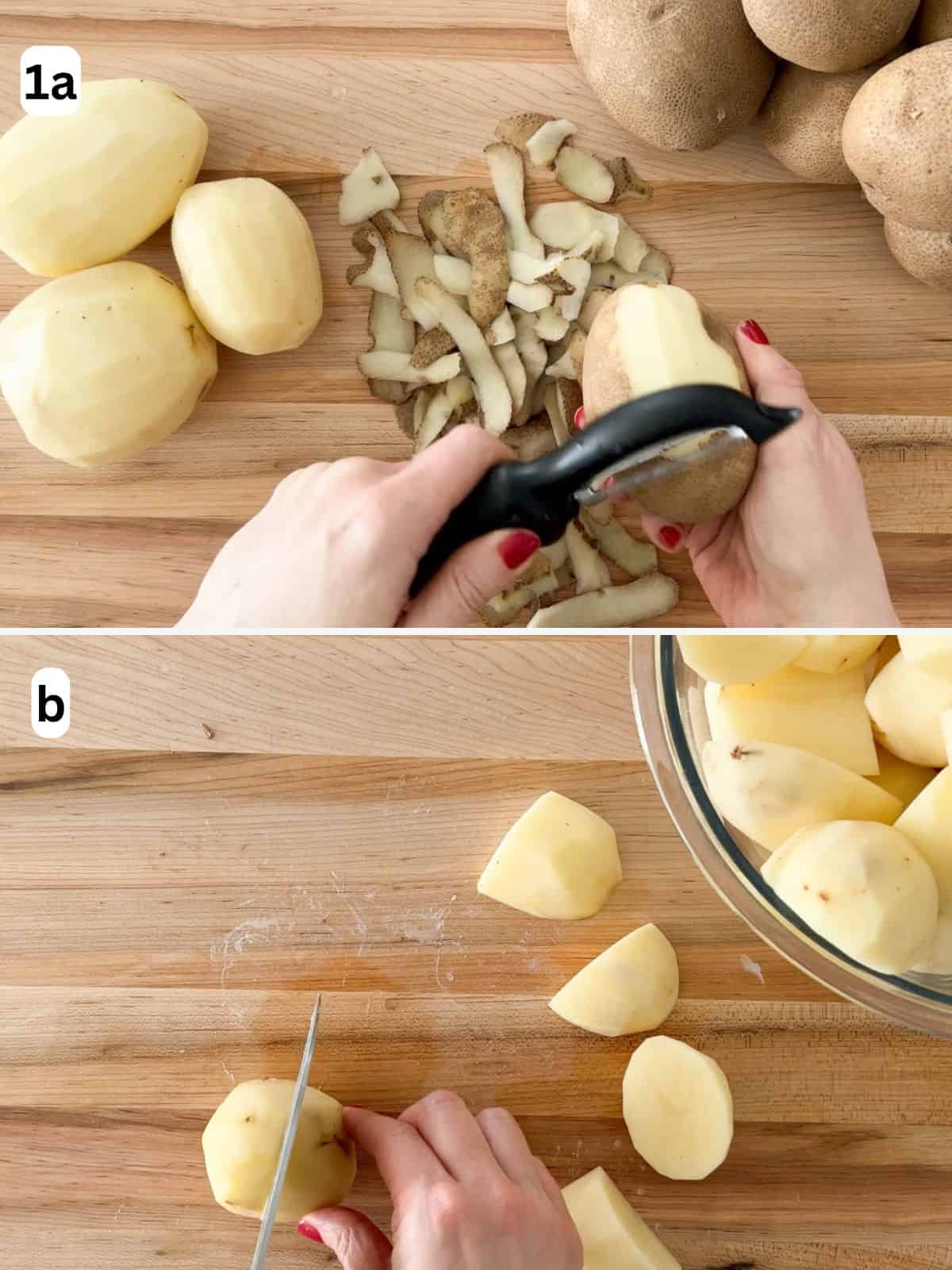
Step 1: Peel each potato (image 1a) and chop into even-sized pieces about 2 to 3 inches in diameter (image 1b).

Step 2: Add the potatoes to a large pot and cover them with cold water. Stir in the salt, then bring to a boil over medium-high heat. Cook for 15 to 20 minutes, or until the potatoes are fork tender. You should be able to insert a fork easily without resistance (image 2). Drain well, then transfer the potatoes to the bowl of your stand mixer.
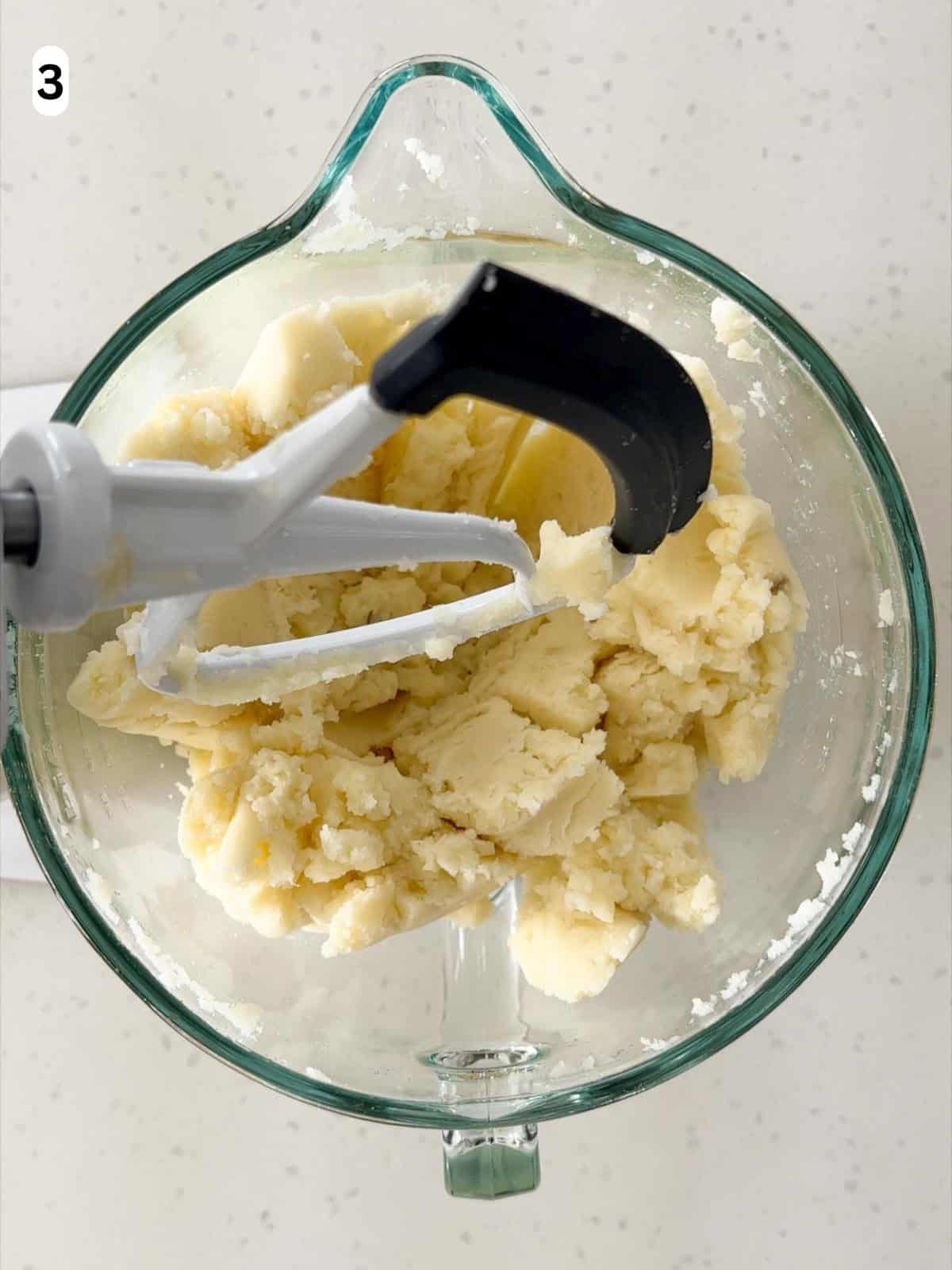
Step 3: Using a KitchenAid or stand mixer fitted with the paddle attachment, mix the potatoes on low speed (1 to 2) for about 2 minutes, until no visible lumps remain (image 3). If you have a flex edge beater (as pictured), you can use it instead of the paddle. The recipe works well with either attachment.

Step 4: Remove the paddle attachment and switch to the wire whisk. Whisk the potatoes on high speed (7 to 9) for about 2 minutes to incorporate air and make them extra fluffy (image 4).
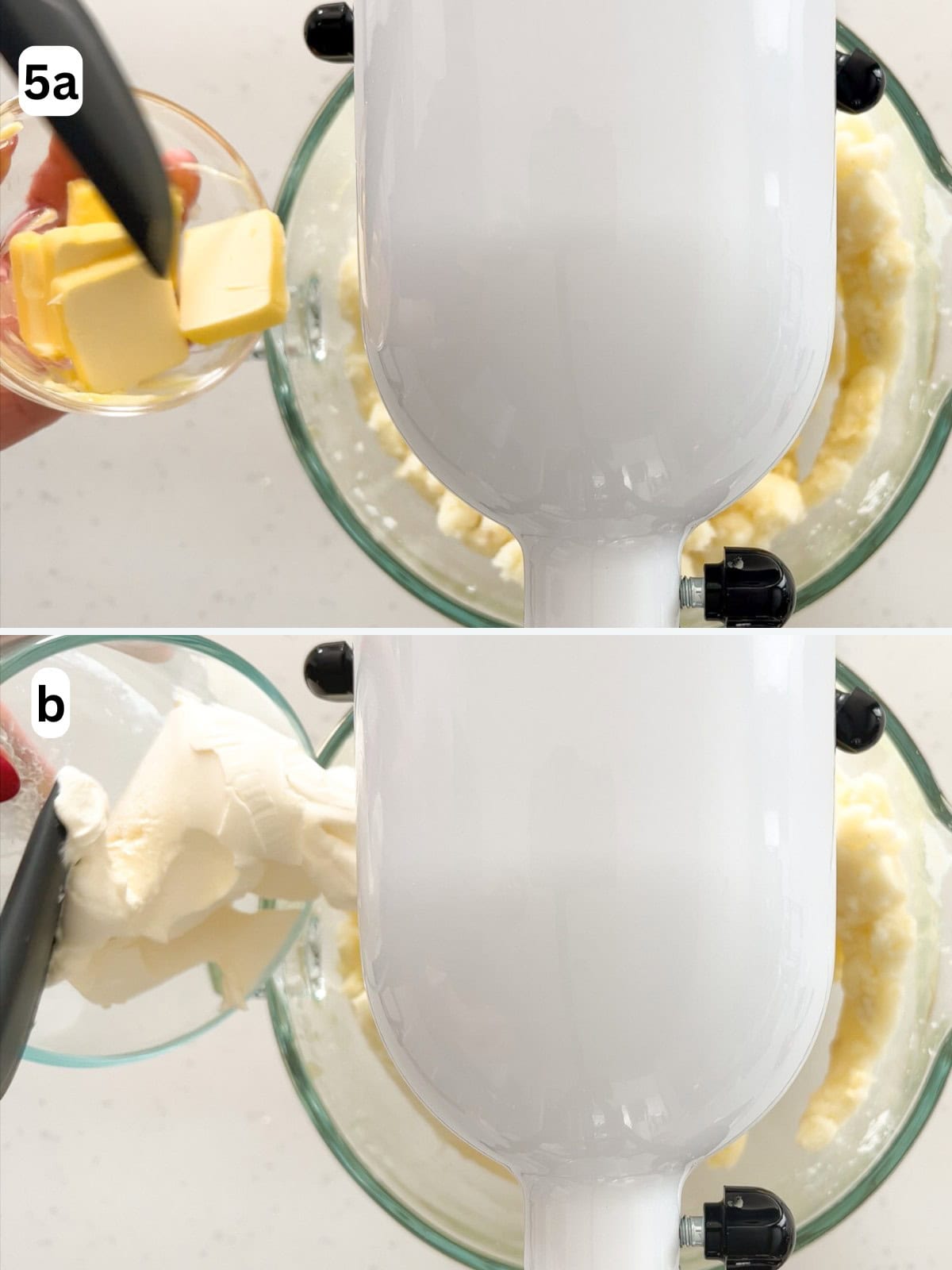
Step 5: With the mixer on medium speed (4 to 5), add the butter and whisk for about 1 minute until melted and combined (image 5a). Add the cream cheese and continue whisking for 1 to 2 minutes, until fully incorporated and smooth (image 5b).
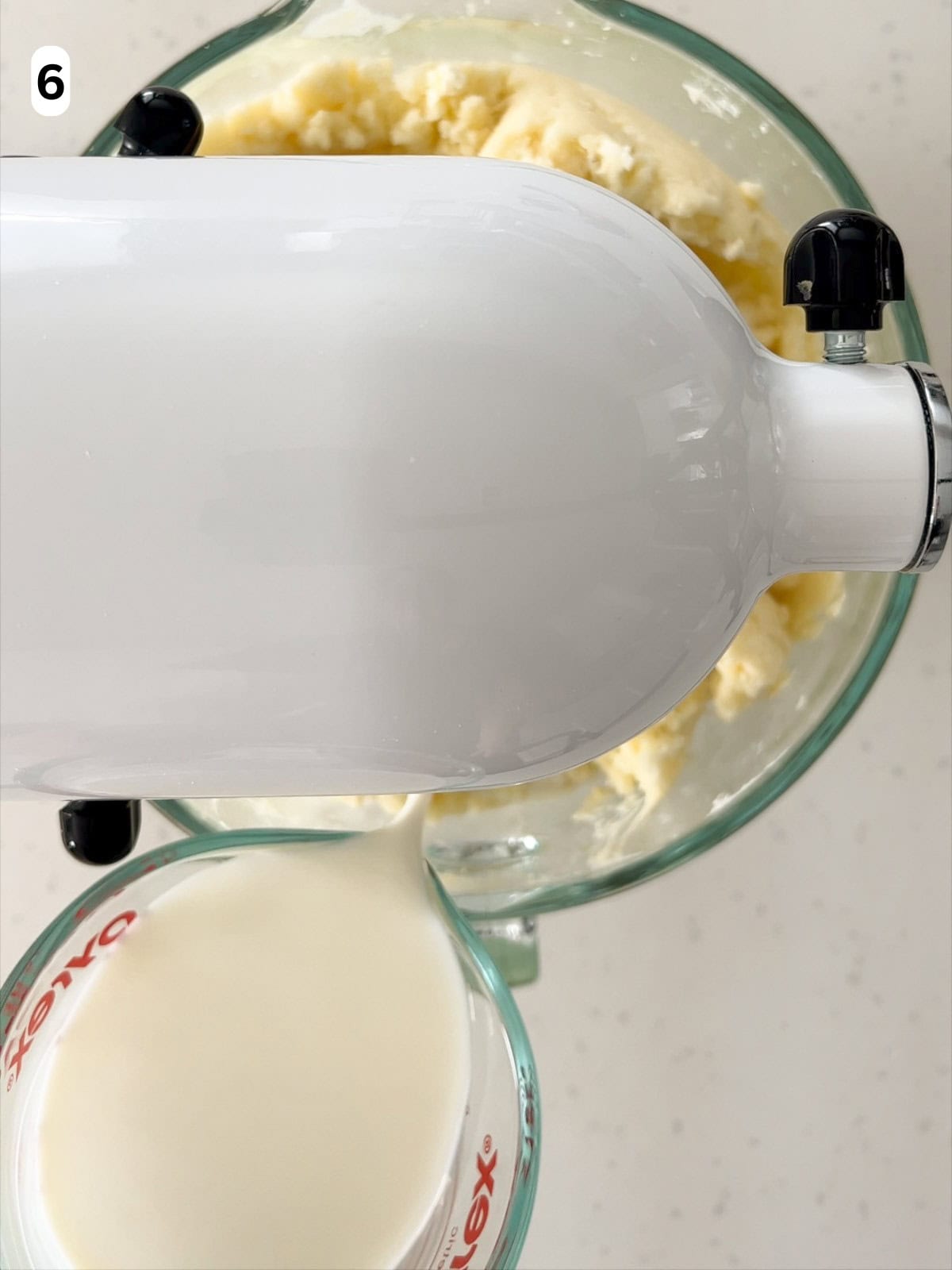
Step 6: With the mixer still on medium speed, gradually add the milk, starting with ½ cup (image 6). Mix until just combined, then taste. If the potatoes need more milk, add it slowly, mixing only until you reach your desired creaminess. To keep the texture light and fluffy, avoid overmixing.
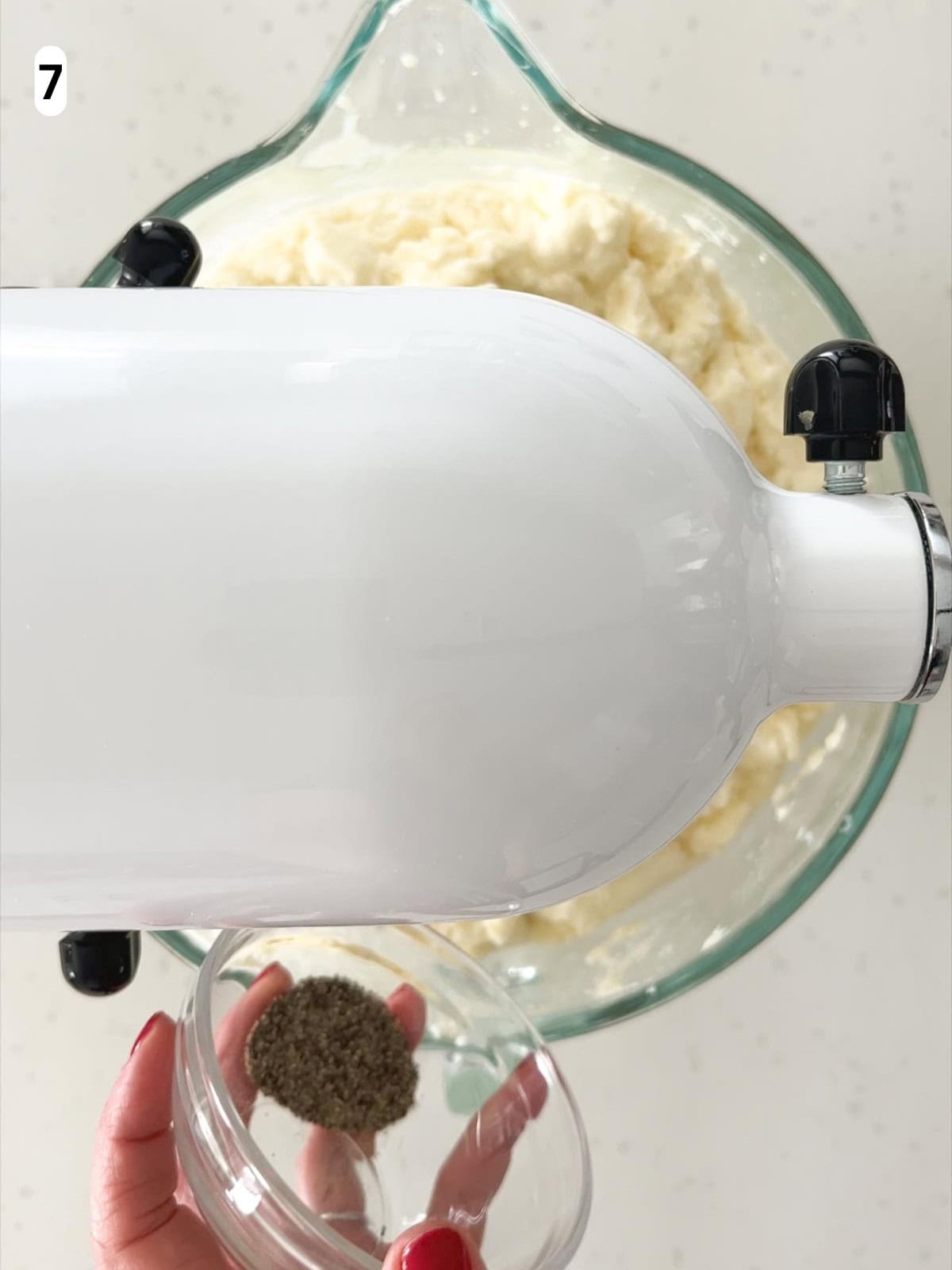
Step 7: With the mixer on low speed (1 to 2), add salt and pepper to taste (image 7).
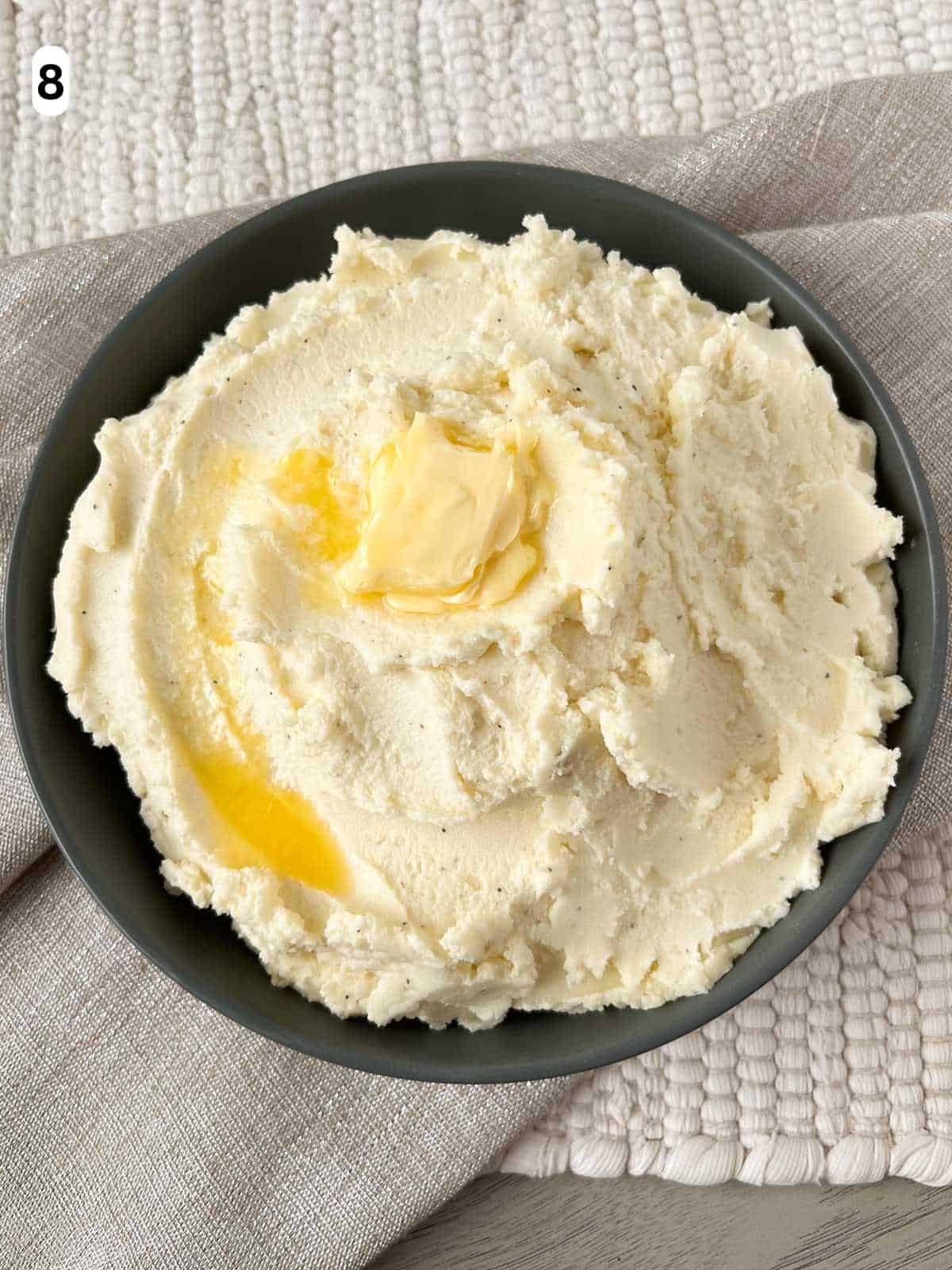
Step 8: Garnish with extra butter as desired and serve immediately while warm (image 8).
Equipment
- KitchenAid or stand mixer: any stand mixer works well for this recipe.
- Paddle attachment or flex edge beater: both work beautifully for mashing the potatoes. The paddle attachment breaks down the potatoes evenly for a smooth, lump-free base. The flex edge beater does the same while its silicone edge scrapes the sides and bottom of the bowl for faster, more even mixing. I prefer the flex edge for efficiency, but either option produces great results.
- Wire whisk attachment: after mashing, this attachment whips air into the potatoes for an extra-fluffy texture.
Storage, Reheating, & Make Ahead
- Storage:
- Refrigerator: store the mashed potatoes in an airtight container in the refrigerator for up to 3 days.
- Freezer: for longer storage, spread them evenly in an airtight container and freeze for up to 1 month. Thaw overnight in the refrigerator before reheating. Mashed potatoes with cream cheese freeze especially well because the added fat maintains a smooth, creamy texture when reheated.
- Reheating: regardless of the method, all leftovers should be reheated to 165°F (74°C) throughout. To restore the creamy texture, stir in a small splash of milk, cream, or butter as needed.
- Stovetop: reheat in a saucepan over low heat, stirring often, until warmed through.
- Microwave: transfer to a microwave-safe dish and heat in 1-minute intervals, stirring between each, until heated throughout.
- Oven: for larger portions, spread in a baking dish, cover with foil, and reheat at 350°F (177°C) for 20 to 30 minutes, or until reaching temperature throughout. Stir halfway through. If the potatoes look loose or soupy, remove the foil for the last 5 to 10 minutes and continue baking uncovered until they thicken and reach your desired consistency.
- Make ahead: these mashed potatoes can be made a day in advance, making them ideal for holiday meals or entertaining. Prepare the recipe as directed. Refrigerate the potatoes in an airtight container until ready to reheat.
For more information on how to handle leftovers safely, check out this USDA Leftovers and Food Safety.
Expert tips
- Start with cold water: adding the potatoes to cold water before bringing them to a boil helps them to cook evenly from the inside out, preventing a gummy or uneven texture.
- Don't overmix: mix just until smooth and fluffy. Overmixing activates the potato starch, which can make the texture gluey.
- Adjust milk gradually: the exact amount of milk depends on your potatoes' age and moisture content. Have extra on hand and add it slowly until you reach your preferred creaminess. You can always add more, but you can't take it out.
- Use room temperature dairy: warm butter, milk, and cream cheese blend more easily and help the potatoes stay smooth and creamy. Remove them from the refrigerator 30 minutes before use. Cold ingredients can cause the butter to seize and make the texture stiff.
FAQ
If your mashed potatoes turn gluey or sticky, it usually means they've been overmixed and the starch has been overworked. To fix them, fold in a bit of warm milk, cream, or melted butter to loosen the texture.
Lumpy mashed potatoes happen when the potatoes aren't cooked long enough or were mixed unevenly. You can fix them by transferring the potatoes back to a pot with some butter and a splash of warm milk or cream. Cook over low heat for a few minutes, stirring gently to soften the lumps. Then return them to the mixer and blend briefly on low speed until smooth.
No, I wouldn't recommend making mashed potatoes with a food processor or immersion blender. They can break down the potatoes too aggressively, which releases excess starch and quickly turns them gluey or gummy. A stand mixer with a paddle or flex edge beater keeps the texture fluffy and smooth without overworking the potatoes.
Pairing
These are my favorite dishes to serve with mashed potatoes:
Did you make this recipe? I'd love to hear what you think! Leave a star rating and comment below. Join my newsletter for more recipes, straight to your inbox.
Recipe

KitchenAid Mashed Potatoes
Save This Recipe! 💌
Ingredients
- 5 pounds russet potatoes *
- 1½ tablespoons kosher salt
- ½ cup unsalted butter (softened to room temperature; plus more for garnish)*
- ½ to 1 cup whole milk *(plus more as needed; room temperature)
- 8 ounces cream cheese *(room temperature)
- Salt and pepper to taste
Instructions
- Peel and chop the potatoes: peel each potato. Then chop them into even-sized pieces about 2 to 3 inches in diameter.
- Boil the potatoes: place the potatoes in a large pot and cover them with cold water. Add 1½ tablespoons of salt and bring to a boil over medium-high heat. Cook for 15 to 20 minutes, or until the potatoes are fork tender. You should be able to insert a fork easily without resistance. Drain well, then transfer the potatoes to the bowl of your stand mixer.
- Mash the potatoes: using a KitchenAid or stand mixer fitted with the paddle attachment, mix the potatoes on low speed (1 to 2) for about 2 minutes, until no visible lumps remain. If you have a flex edge beater, you can use it instead. The silicone edge scrapes the sides and bottom of the bowl, helping the potatoes mix a bit faster. The recipe works well with either attachment.
- Whisk the potatoes: remove the paddle attachment and switch to the wire whisk. Whisk on high speed (7 to 9) for about 2 minutes to incorporate air and make the potatoes extra fluffy.
- Add butter and cream cheese: with the mixer on medium speed (4 to 5), add the butter and whisk for about 1 minute until melted and combined. Add the cream cheese and continue whisking for 1 to 2 minutes until smooth and fully incorporated.
- Gradually add milk: with the mixer still on medium speed, slowly add the milk, starting with ½ cup. Mix until just combined, then taste. If the potatoes need more milk, add it slowly until they reach your desired creaminess. To keep the texture light and fluffy, avoid overmixing.
- Season the potatoes: with the mixer on low speed (1 to 2) add salt and pepper to taste, mixing until just combined.
- Serve: garnish with extra butter and serve immediately while warm. Enjoy!
Video
Notes
- Potatoes: Yukon gold also work great. They will be super creamy but more dense.
- Butter: the unsalted butter can be substituted with the same amount of salted butter. In the final seasoning step you can add less salt or omit it.
- Milk: the exact amount of milk needed will depend on the water content of your potatoes and your creaminess preference.
- Cream cheese: tub-style works best because it has a lighter consistency. If using block cream cheese, you may need to add more milk. The cream cheese can be substituted with the same amount of Greek yogurt. This will make the potatoes lighter and a bit tangy.
- Add a topping: I love sprinkling pangrattato (toasted Italian breadcrumbs) on top for a pop of texture.
- Flavor varieties: for garlic mashed potatoes: mix in 2 to 3 cloves of roasted garlic with the butter and cream cheese (step 5). For cheesy mashed potatoes: mix in ¼ cup of freshly grated Parmigiano Reggiano, Pecorino Romano, or Grana Padano in the same step. For herb mashed potatoes: stir in 1 to 2 tablespoons of freshly chopped herbs like chives, thyme, or parsley just before serving.
- Equipment: KitchenAid/stand mixer; paddle attachment/flex edge beater; wire whisk attachment.
- Storage: store in an airtight container in the refrigerator for up to 3 days or the freezer for up to 1 month. Thaw overnight in the refrigerator before reheating.
- Reheating: all leftovers should be reheated to 165°F (74°C) throughout. Add a splash of milk or butter as needed for a creamy texture. For stovetop: reheat in a saucepan over low heat, stirring often until warmed through. Microwave: reheat in a microwave-safe dish in 1-minute intervals, stirring between each, until heated throughout. Oven: for larger portions, spread into a baking dish, cover with foil, and reheat at 350°F (177°C) for 20-30 minutes, or until reaching temperature throughout. Stir halfway through. If the potatoes are soupy, remove the foil for the last 5-10 minutes of baking, or until they reach your desired consistency.
- Make ahead: these mashed potatoes can be made a day in advance. Follow the recipe as directed. Refrigerate in an airtight container until ready to reheat. Then follow the reheating instructions above until the potatoes reach 165°F (74°C) throughout.
Nutrition
The provided nutrition and storage information is estimated. Accuracy is not guaranteed.
See our Disclaimer for more information.



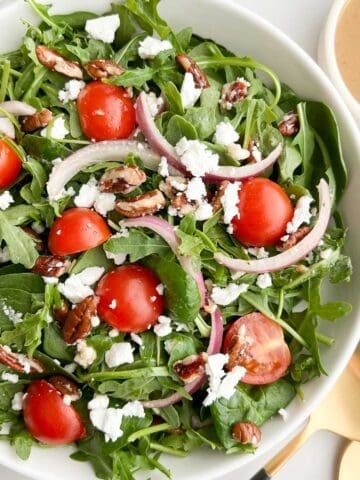








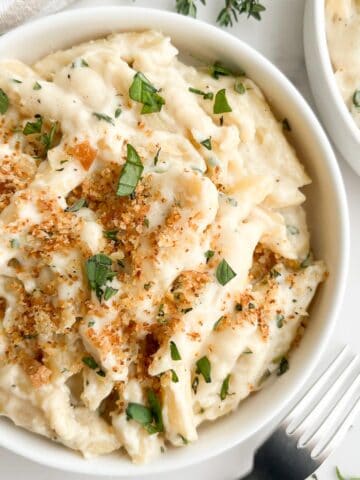
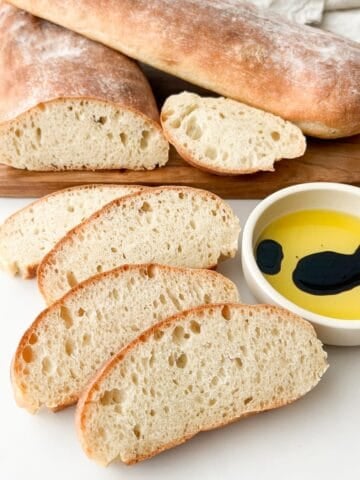


Peggy says
we like gravy on our mashed potatoes does using cream cheese change the flavor of the mashed potatoes
Maria D'Errico says
Hi Peggy,
Great question! Using cream cheese adds a subtle tangy richness to the flavor, but it’s not overpowering. It enhances the creaminess and texture, making the potatoes smooth and fluffy — perfect for soaking up gravy! I also find the leftovers freeze better with the cream cheese added. If you’re concerned about the flavor being too different, you could start with a smaller amount of cream cheese and adjust to your taste. I hope this helps and I'd love to hear how it turns out!
Anne says
I love these mashed potatoes. The cream cheese definitely adds to the flavor and texture. They are easy to make and freeze well. Another Little Nonni favorite.
Maria D'Errico says
Thank you! I'm so happy you love these mashed potatoes.
RD says
These mashed potatoes are DELICIOUS! They are smooth and creamy. The cream cheese adds a delicate tang that elevates this dish. They were super-easy to make and were a big hit with my guests. I love these taters!
Maria says
Thank you, I'm so happy you love them as much as I do!